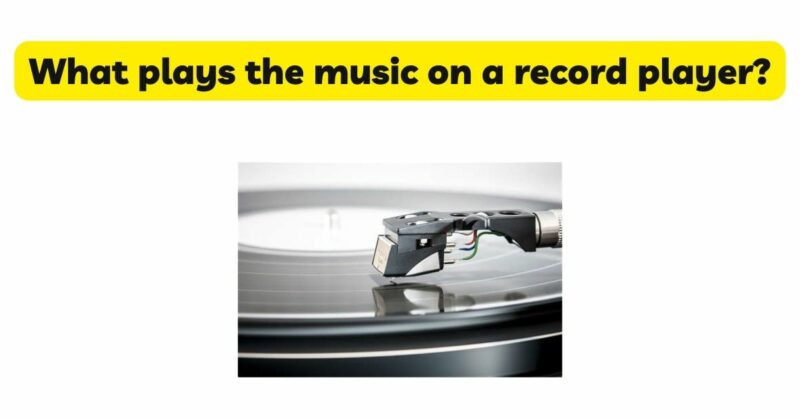The mesmerizing experience of listening to music on a record player has a certain charm that resonates with audiophiles worldwide. But have you ever wondered what exactly plays the music on a record player? In this article, we will explore the various components that work in harmony to bring music to life on a record player, from the vinyl record itself to the crucial mechanisms within the turntable. By delving into the intricacies of this process, we can gain a deeper appreciation for the magic that unfolds every time the needle touches the groove.
- The Vinyl Record: The Musical Source At the heart of a record player lies the vinyl record, which serves as the source of music. The record contains grooves that are meticulously engraved with the audio information, capturing the essence of the original recording. These grooves vary in depth, width, and spacing, encoding the vibrations of the sound waves captured during the recording process.
- The Turntable: Spinning the Musical Canvas The turntable provides the stage upon which the vinyl record spins. It consists of several components that work in unison to facilitate the playback of music:
a. Platter: The platter is the rotating platform on which the vinyl record rests. Its primary purpose is to ensure the stable and consistent rotation of the record during playback. Platters can be driven by different mechanisms, including belt drive or direct drive systems.
b. Motor: The motor is the powerhouse of the turntable, responsible for rotating the platter at a precise speed. It ensures the steady rotation required for accurate playback, maintaining the proper synchronization between the groove’s undulations and the needle’s movement.
c. Belt or Direct Drive: Turntables can employ either a belt drive or a direct drive system. In a belt drive system, a belt connects the motor to the platter, reducing motor-induced vibrations and minimizing noise transmission. Direct drive systems, on the other hand, have the motor directly attached to the platter, offering better speed stability and torque.
- The Tonearm: Guiding the Needle’s Dance The tonearm plays a crucial role in guiding the needle’s delicate dance across the grooves of the vinyl record. It is a mechanical arm that holds the needle, allowing it to smoothly move along the surface of the record. The tonearm typically features an adjustable counterweight, anti-skate mechanism, and sometimes a cueing lever to facilitate precise positioning of the needle on the record.
- The Cartridge: Transforming Mechanical Motion into Electrical Signals Mounted at the end of the tonearm, the cartridge is the gateway through which mechanical motion is transformed into electrical signals. It consists of several key components:
a. Stylus (Needle): The stylus, commonly known as the needle, is the small, pointed tip that makes physical contact with the grooves of the vinyl record. It meticulously follows the undulations of the grooves, extracting the encoded audio information. The stylus can have different shapes and materials, such as spherical, elliptical, or microline, each affecting tracking ability and sound fidelity.
b. Cantilever: The cantilever is a slender rod that supports the stylus and allows it to move freely along the grooves. It acts as a mechanical linkage between the stylus and the components inside the cartridge.
c. Generator: Inside the cartridge, a generator converts the mechanical vibrations detected by the stylus into electrical signals. The generator consists of a tiny magnet or coils that move in response to the stylus’ vibrations, inducing electrical currents that mirror the variations in the grooves.
- Amplification and Playback The electrical signals generated by the cartridge are extremely weak and require amplification to reach audible levels. The amplified signals are then processed and sent to a preamplifier or phono stage, which boosts the signals to line-level. From there, they can be further amplified by an amplifier or receiver before being played through speakers or headphones, ultimately recreating the music captured on the vinyl record.
Conclusion: The interplay between the various components within a record player creates a harmonious symphony that brings music to life. From the vinyl record itself, encoded with the vibrations of the original sound waves, to the turntable’s mechanisms, guiding the needle’s dance across the grooves, and the cartridge’s ability to convert mechanical motion into electrical signals, each component plays a vital role. Together, they create an immersive and nostalgic listening experience, allowing us to connect with the music in a way that is both unique and enchanting. Understanding the ensemble of components that play music on a record player deepens our appreciation for the craftsmanship and engineering behind this timeless form of musical enjoyment.


